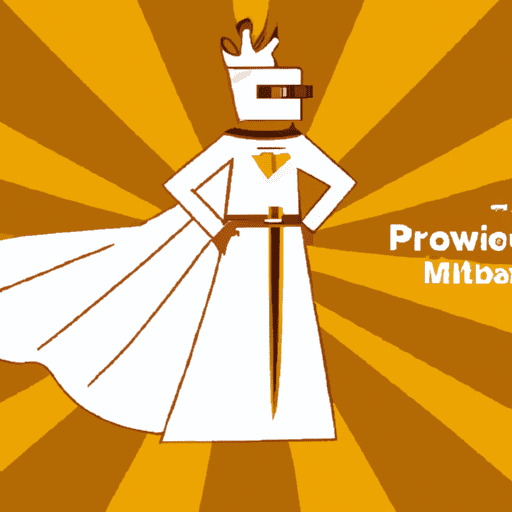The Art of Email Cadence: How to Get the Right Emails to the Right Customers at the Right Time
Introduction
Email marketing is a powerful tool for businesses to connect with their audience and drive engagement. However, simply drafting up some copy and hitting send is not enough to ensure success. One of the most crucial components of an effective email campaign is email cadence. In this article, we will take a deep dive into what email cadence is and establish the fundamental principles of structuring a successful one. From understanding the frequency and timing of emails to personalization and A/B testing, we will cover everything you need to know to get your email cadence right.
The Importance of Email Cadence
The success of an email campaign can hinge upon the effectiveness of its cadence. If the cadence is too intrusive, obnoxious, or directionless, you can lose out on opportunities to guide leads through their buyer’s journeys. Potential customers may feel pestered or confused by constant, irrelevant newsletters and promotions, causing them to unsubscribe or ignore your emails. On the other hand, if you don’t have a consistent and strategic cadence, you may miss out on valuable opportunities to engage with your audience and drive conversions.
Email Marketing Frequency
When it comes to email frequency, timing plays a crucial role. According to a survey of 300 marketers, emails sent on Monday, Tuesday, and Wednesday tend to get the most engagement. The best time to send marketing emails is from 9 a.m. to 12 p.m. on Tuesdays, followed by Mondays and Wednesdays at the same time. It’s important to note that the weekend is a dead zone for engagement, with Friday, Saturday, and Sunday having the lowest open and click-through rates.
When it comes to the frequency of sending emails, there is no one-size-fits-all approach. It depends on your business and audience. Some marketers send weekly emails, while others send emails multiple times per month. It’s crucial to adjust your send frequency for less engaged subscribers. Keep in mind that email frequency is not an exact formula, and it’s essential to find the right balance that works for your business and audience.
Email Cadence Examples
Effective email cadence involves curating the timing and frequency of your emails to appeal to your target demographic. For example, if your target demographic is 18-to-25-year-olds who check their emails early in the morning, you can send your emails at 5:45 a.m. to be among the first they see. Conversely, if your target demographic is 55 and above and prefers to receive emails less frequently, you can send emails every two weeks to boost engagement.
Understanding Your Goals and Your Customer’s Mindset
Before determining your email cadence, it’s crucial to understand your goals and your customer’s mindset. What do you want to achieve with your email campaign? Are you looking to drive traffic to your blog, increase e-commerce sales, schedule meetings, or close deals? Your ultimate goal will dictate the strategy behind your cadence.
Additionally, it’s essential to understand where your customers are in their buyer’s journey. Different stages of the buyer’s journey warrant different messages. Automation software can help tailor your email content and timing to suit different leads’ behavior and interests. By understanding your goals and your customer’s mindset, you can create a personalized and effective email cadence.
Personalize When You Can
Personalization is key to a successful email cadence. Sending impersonal mass-email blasts with generic greetings will not resonate with your audience. It’s crucial to customize your subject lines and email content to cater to specific leads. In fact, email personalization is considered the most effective email marketing strategy for reaching goals by 47.2% of marketers. Using email software that allows for personalization can greatly enhance the effectiveness of your email cadence.
Use A/B Testing to Determine Preferences
A/B testing is a valuable tool for determining the best email frequency and timing for your audience. It involves sending different versions of emails to different groups and analyzing the data to see which performs better. For example, you can send one group weekly emails and another group bi-weekly emails to see which frequency leads to higher engagement. A/B testing allows you to make data-driven decisions and optimize your email cadence for maximum effectiveness.
Strike a Balance: Don’t Be Too Shy or Aggressive
When planning your email cadence, it’s important to strike a balance between being too shy and being overly aggressive. While it’s easy to have anxiety about annoying your leads, being too passive can result in missed sales opportunities. Consistently sending out emails is essential for keeping your prospects and customers engaged. On the other hand, bombarding your audience with daily reminders and promotions can lead to unsubscribes. Finding the right balance requires understanding your audience’s preferences and monitoring engagement metrics.
Hone in on the Right Frequency for Your Business
There is no magic number when it comes to email frequency. It varies from business to business and may require some trial and error to find the right frequency that best fits your business and customers’ interests. Studying industry averages for email frequency can provide a starting point, but ultimately, you need to listen to your audience and adjust accordingly. Creating a consistent email marketing calendar can help ensure your emails stay on track and aligned with your goals.
Give Your Subscribers Autonomy
It’s crucial to give your subscribers the option to control their own email frequency. Including a link in your emails that allows them to update their preferences keeps them from unsubscribing altogether. Not all customers approach email frequency in absolutes, and giving them the flexibility to adjust their preferences can help retain their interest and engagement

